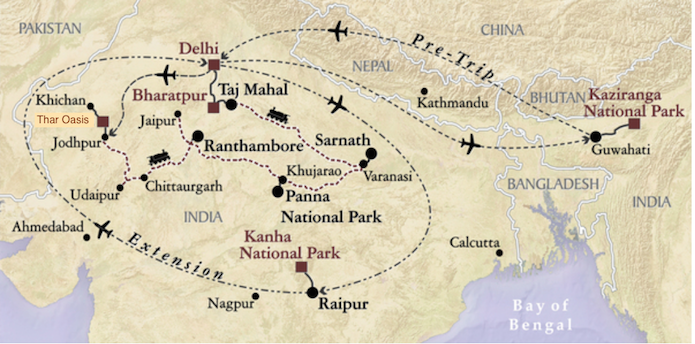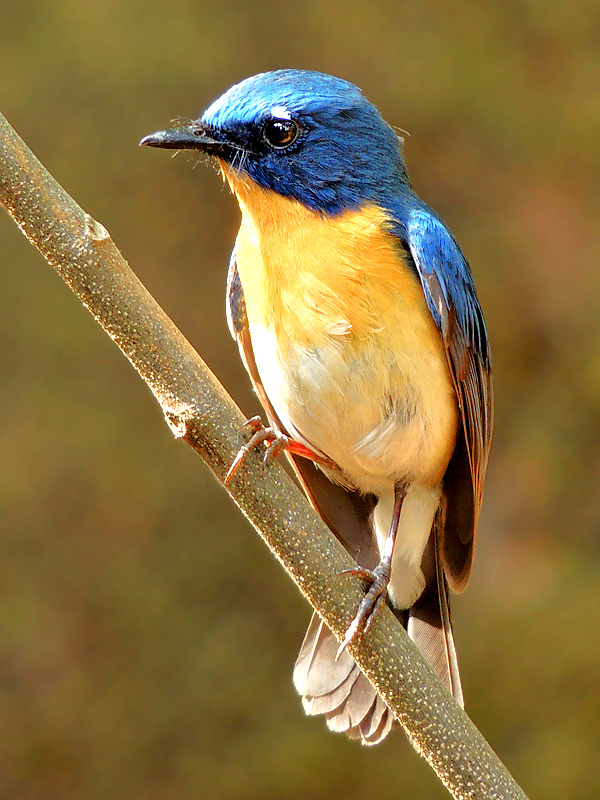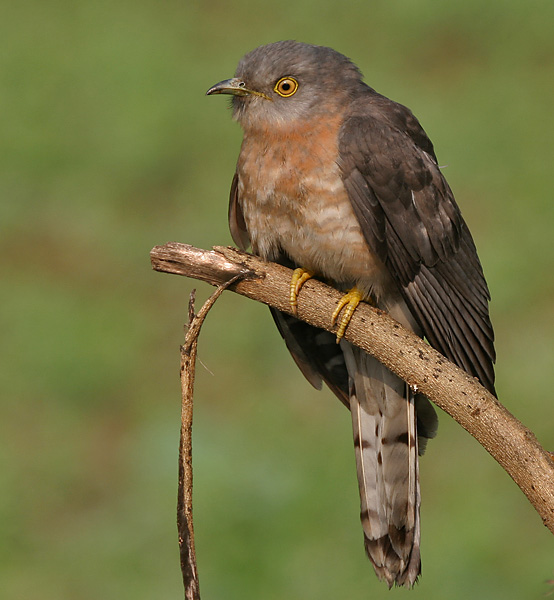
We spent today at the Kanha National Park in Madhya Pradesh
(Image courtesy of VENT)
(Click on images to enlarge)

|
|
|
| Everywhere there were Peafowl to photograph, as well as four species of deer. (We saw Common Barking Deer, Sambar, Swamp Deer, and Spotted Deer in the course of the day.) The Spotted Deer had many tiny fawns with a very high cuteness quotient. |
|
Spotted Deer mother and fawn, Kanha National Park |
Peacock, Kanha National Park |
| Other great birds seen close up included a Crested Serpent-Eagle and a Brown Fish-Owl. A tree that appeared to be covered with flowers was actually covered with Red-rumped Swallows. A Streak-throated Woodpecker (a write-in bird—one not on our checklist) posed on a tree trunk long enough for us to photograph it well. |
|
Brown Fish-Owl, Kanha National Park |
Streak-throated Woodpecker, Kanha National Park |
| We found a very handsome sleeping Indian Scops Owl and a flock of Bambis: |
|
Indian Scops Owl, Kanha National Park |
Spotted Deer fawns, Kanha National Park |
|
We joined the others in the hotel restaurant for a really good lunch, and I
rejoiced in an hour-long nap afterward.
Flower arrangement outside restaurant, Baagh Resort
|
 Male Tickell’s Blue-Flycatcher (Image courtesy of Wikimedia Commons) |
|
As the sun got low in the sky, I began to get chilled, so I was somewhat
relieved when we began driving toward the exit. We weren’t far from it
when a passing jeep delivered the message that a male tiger had been seen
sitting out “on the pipeline”. That resulted in our driver going
in reverse at high speed for about half a mile to where he could turn around and
then heading off at higher speed for the pipeline area, wherever that may be, in
a queue of careening jeeps and lots of dust. We were apparently almost there
when the word came down that the tiger was gone. By then it was almost closing
time, so the whole gang sped toward the exit bouncing their passengers rather
unmercifully. It was not a whole lot of fun. I was somewhat reluctant to hand
over the 100 rupees I’d brought along for a tip.
But then we were back on the paved road and driving along at a reasonable rate, and Gajendra called for a halt when he spotted a Common Hawk-Cuckoo perched singing above the highway, which gave us a good look at a new bird. I was in better spirits when I got back to our room and found Lee looking rested. |
 Common Hawk-Cuckoo (Image courtesy of Wikimedia Commons) |
which is believed to have evolved to be a visual mimic of |
 Shikra (Image courtesy of Wikimedia Commons) |
|
Lee and I joined the others for a really excellent dinner that ended with gulub
jamuns in a cream sauce. The news was that the park will be closed all day
tomorrow because of Holi, so we will do a bird walk in the garden in the morning
and a drive around the area in the afternoon. Lee and I are both ready for some
downtime, so this is not a disappointment. We were able to get to bed by 9:30.
|
| Lesser Whistling Duck | Cotton Pygmy Goose | Indian Peafowl | Little Grebe | Asian Openbill |
| Black Stork | Little Cormorant | Eastern Great Egret | Intermediate Egret | Little Egret |
| Eastern Cattle Egret | Indian Pond Heron | Red-naped Ibis | Black-shouldered Kite | Oriental Honey-Buzzard |
| Crested Serpent Eagle | Crested Hawk-Eagle | Shikra | Yellow-wattled Lapwing | Red-wattled Lapwing |
| Common Greenshank | Oriental Turtle Dove | Spotted Dove | Yellow-footed Green Pigeon | Common Hawk-Cuckoo |
| Greater Coucal | Indian Scops Owl | Brown Fish Owl | White-throated Kingfisher | Green Bee-eater |
| Indian Roller | Eurasian Hoopoe | Brown-headed Barbet | Coppersmith Barbet | Streak-throated Woodpecker |
| Black-rumped Flameback | Common Kestrel | Long-tailed Shrike | Black-hooded Oriole | Black Drongo |
| Ashy Drongo | Greater Racket-tailed Drongo | Rufous Treepie | House Crow | Indian Jungle Crow |
| Red-rumped Swallow | Red-vented Bulbul | Zitting Cisticola | Yellow-eyed Babbler | Jungle Babbler |
| Tickell’s Blue Flycatcher | Siberian Stonechat | Common Myna | Brahminy Starling | Grey Wagtail |
| Paddyfield Pipit | House Sparrow |

